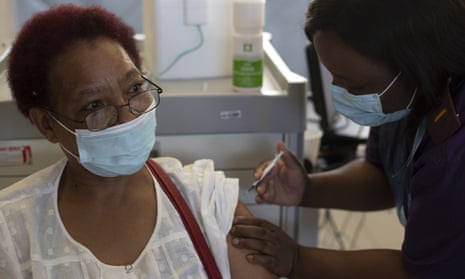Enough Covid-19 vaccines are forecast to be produced in 2021 to inoculate 70% of the populations of every country, a quantity that could blunt the pandemic years sooner than predicted if it were distributed equitably, according to new analysis.
But much of that supply is already reserved for wealthy countries, the report from the Duke University Global Health Innovation Centre said, while saying the actual amount of vaccines produced this year is likely to be less than forecast because of unforeseen delays including shortages of raw materials.
The emergence of dangerous new variants may lead to demand for booster shots that would also constrict global supply, said the study released on Monday, which analysed manufacturers’ publicly available data.
The extraordinary demand for Covid-19 vaccines and the record speed with which multiple candidates have been produced has transformed the vaccine manufacturing industry, which before the pandemic was producing about 5bn doses a year to inoculate against viruses such as seasonal influenza, measles and mumps.
Manufacturers estimate they will produce about 12bn doses of Covid-19 vaccines alone this year, the analysis showed, with investments in capacity expected to lead to a massive ramping up in supplies over the next months.
Figures from the data firm Airfinity show nearly a billion Covid-19 vaccine doses have been produced in the first four months of this year, but that figure is predicted to balloon to at least 9.4bn by the end of 2021.
“If manufacturers are able to reach their goal of 12bn doses this year and if those doses were purchased and distributed equitably across the world’s population, we could meet much of the world’s needs in 2021,” the Duke researchers said.
“It is worth noting that those are both big ifs,” they added, with shortages of raw ingredients and packaging materials already leading to production delays that could be exacerbated by governments implementing export bans on vital ingredients.
Those shortfalls will eat into the vaccines available to most of the world, with the majority of existing supply already bought by a small number of high-income nations including the UK, US and Canada, who have secured enough for on average at least twice what their populations would need.
They and others have pledged to share excess supplies, but the report said the emergence of dangerous new Covid-19 variants might lead some governments to hold on to extra doses.
“We also do not yet know how long immunity from vaccines will last and we may need regular booster shots to maintain immunity and to target new variants,” the report said. “Some countries may also choose to purchase and maintain surplus vaccine doses beyond their immediate needs in order to manage future risks, diminishing the immediate supply for other countries.”
The formulations produced by Oxford/AstraZeneca, Pfizer/BioNTech and Novavax will make up the bulk of the projected 2021 supply, the report showed, with 10 other vaccines contributing to the mix.
Capacity will continue to grow in 2022 and more vaccines are expected to be approved, though other analysis has said that demand will outstrip supply until at least 2024.
The World Health Organization and others have urged pharmaceutical companies such as Pfizer, Johnson & Johnson and Moderna to share their patents and knowhow so that any capable labs around the world can begin producing vaccines and augment the supply.
They and other companies have preferred to make direct deals with competitors, significantly increasing supply but allowing the companies to maintain control over patents they expect will generate billions of dollars in profits for several years.
